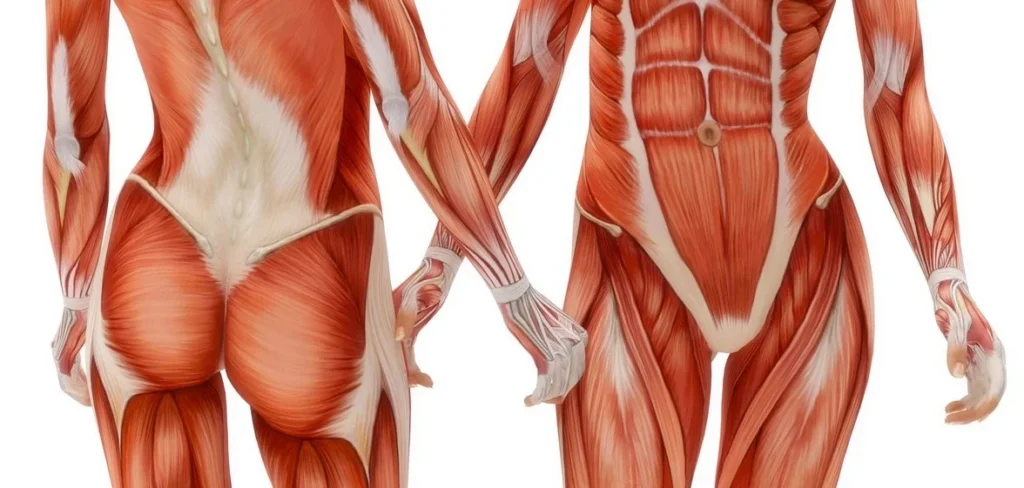Ever bent down to tie your shoes and felt that twinge in your lower back? Or stood up after a long Zoom call only to stretch out with a groan? Yeah—you’re not alone.
Back pain has become a silent epidemic, and one often-overlooked culprit is weak core muscles. We tend to blame our chairs, our beds, or even that one heavy grocery bag. But the truth is, your core plays a huge role in supporting your spine. If it’s not doing its job properly, your back is left to pick up the slack—and that can lead to chronic discomfort, stiffness, or even injury.
This article is your friendly guide to understanding the link between core muscles and back pain, and—more importantly—how you can start strengthening them (without needing to become a gym rat).
✅ Key Takeaways
-
Your core includes more than just your abs—it’s your entire trunk’s support system.
-
A weak core can lead to poor posture and back strain.
-
Gentle, consistent core exercises can ease back pain and prevent future issues.
-
You don’t need fancy equipment—just commitment and the right movements.
🧠 What Exactly Is Your Core?
Most people hear “core” and think six-pack abs. But the real core is so much more.
🔍 Your Core Includes:
-
Rectus abdominis (your “six-pack” muscles)
-
Transverse abdominis (deep abdominal wall)
-
Internal and external obliques
-
Multifidus and erector spinae (supporting spinal muscles)
-
Pelvic floor muscles
-
Diaphragm
-
Hip flexors and glutes
Together, this complex group acts like a natural corset, stabilizing your spine, pelvis, and rib cage. When one part is weak or misfiring, your body compensates elsewhere—often putting strain on your lower back.
📉 How Weak Core Muscles Cause Back Pain
Let’s break it down simply.
When your core is underactive or out of balance, your body tries to stay upright and functional by overusing your back muscles. These muscles were never designed to be the primary stabilizers. So over time, they get tight, fatigued, and inflamed.
Real-Life Examples:
-
Standing too long? Your pelvis tilts forward. Weak core.
-
Slouching at your desk? Your spine collapses. Weak core.
-
Back hurting during house chores? You’re likely bending from your back, not your hips. Weak core.
💬 “The core is the foundation of all movement. A weak core often translates into back pain, poor posture, and even trouble with balance.”
— Dr. Stuart McGill, spine biomechanics expert
🪞 The Posture-Back Pain Loop
Bad posture strains your core. A weak core worsens posture. And poor posture increases back pain.
This vicious cycle affects millions. According to the National Institute of Neurological Disorders, about 80% of adults experience low back pain at some point in their lives—many due to muscle imbalances and inactivity.
🧘♀️ How to Know If Your Core Is Weak
Here are some signs your core might be crying out for help:
-
You get tired standing for long periods.
-
Your lower back aches after sitting too long.
-
Your hips feel tight or your back arches when walking.
-
You struggle with balance or coordination.
-
You feel discomfort when doing everyday tasks like bending, lifting, or twisting.
If this sounds familiar, your body isn’t failing you. It’s just sending you a signal: “Strengthen me.”
🏋️♀️ The Safest Core Exercises for Back Pain
Before you dive into planks or crunches, take a breath. When dealing with back pain, form and control matter more than intensity.
Let’s walk through gentle but powerful core exercises that target deep stability muscles—not just surface abs.
🔹 1. Pelvic Tilts
Great for activating the transverse abdominis and reducing lumbar tension.
-
Lie on your back with knees bent.
-
Gently press your lower back into the floor as you tilt your pelvis upward.
-
Hold for 5 seconds. Breathe.
-
Repeat 10–15 times.
🔹 2. Dead Bug
Trains coordination and core engagement while keeping your spine neutral.
-
Lie on your back, arms up, knees bent 90 degrees.
-
Slowly lower one arm and the opposite leg toward the floor.
-
Keep your back pressed into the ground.
-
Return to start and switch sides.
-
10–12 reps per side.
🔹 3. Bird Dog
Targets spinal stabilizers and promotes balance.
-
Start on all fours, spine straight.
-
Extend right arm and left leg.
-
Hold for 3–5 seconds, keeping hips level.
-
Return and switch sides.
-
8–10 reps per side.
🔹 4. Glute Bridge
Strengthens glutes and supports lower back.
-
Lie on your back, knees bent, feet flat.
-
Lift hips until body forms a straight line from knees to shoulders.
-
Squeeze glutes. Hold 5 seconds.
-
Lower slowly.
-
Repeat 12–15 times.
🔹 5. Side Plank (Modified)
Strengthens obliques and helps stabilize the spine laterally.
-
Lie on your side, forearm under shoulder, knees bent.
-
Lift hips, forming a straight line.
-
Hold 15–30 seconds. Switch sides.
💡 Tip: Focus on quality over quantity. Even just 5–10 minutes a day can create real change.
🔄 Consistency Beats Intensity
You don’t need a fancy gym membership. You need repetition, intention, and patience.
Like brushing your teeth, core training works best when it becomes a daily (or near-daily) habit.
-
Start with 2–3 days per week
-
Add 1–2 more as your body adjusts
-
Pair with daily walking or light stretching
📊 The Science Backs It Up
A 2015 study published in the Journal of Physical Therapy Science found that core stabilization exercises significantly reduced lower back pain intensity and improved functional movement in adults over a 6-week period.
Another study in Spine (2001) found that core-strengthening programs reduced the recurrence of back pain in chronic sufferers compared to general exercise alone.
Harvard Health also recommends core-focused routines as a top way to ease persistent low back issues.
🥴 What NOT to Do (Mistakes That Worsen Core-Back Issues)
Even with good intentions, some movements can do more harm than good.
Avoid these if you’re dealing with back pain:
-
Sit-ups or crunches — They can compress the spine and aggravate discs.
-
Lifting heavy weights without core control
-
Twisting movements when your core is weak
-
Overtraining — Muscles need rest too!
If you’re unsure, consult a physical therapist or trainer familiar with back-safe exercise modifications.
🧩 Core Isn’t Just Strength—It’s Awareness
It’s not just about muscle. Your brain plays a role too. Learning to activate your core on demand—especially during daily movements—is key.
Try this:
-
When lifting something, brace your belly like you’re preparing for a punch.
-
While standing in line, engage your lower abs and align your ribs over your hips.
-
During walks, focus on tall posture and glute activation.
These micro-habits turn into powerful support systems for your spine.
💡 Final Thoughts
If your back has been bothering you lately, don’t just blame your chair or your mattress. Take a moment to check in with your core.
Is it active? Is it strong? Or has it been taking a backseat while your spine does all the heavy lifting?
The good news is that strengthening your core is totally within reach—no matter your fitness level. You don’t need to chase six-pack abs. You just need a solid, stable center.
Even just a few mindful minutes a day can give your back the relief it’s been craving.
🙋♀️ FAQ — Core Muscles & Back Pain
Q1: Can weak core muscles cause lower back pain?
Yes. A weak core puts extra stress on your spine, which can lead to chronic or acute back pain.
Q2: How do I know if my core is weak?
Common signs include back fatigue during standing, slouching posture, balance issues, or tight hips.
Q3: Are planks safe for back pain?
Yes, when done with proper form. Modified or side planks are a safer starting point.
Q4: Can I fix back pain with just core exercises?
Not always. Core training helps, but posture, flexibility, and overall movement patterns matter too.
Q5: How often should I train my core?
Start with 2–3 times a week and build up as tolerated. Consistency is key.
Q6: Are crunches good for core strength?
Not if you have back pain. They can strain the spine. Stick with stabilization moves.
Q7: What’s the best core exercise for beginners with back pain?
Pelvic tilts and bird dogs are gentle, safe, and effective to start with.
Q8: Can tight hip flexors contribute to back pain too?
Absolutely. They pull your pelvis forward, increasing strain on your lower back.
Q9: Should I see a doctor before starting core exercises?
If you have severe, shooting, or unexplained back pain—yes. Always rule out medical causes first.
Q10: Do glutes count as part of the core?
Yes! Strong glutes support spinal alignment and are crucial for a pain-free back.
🔗 Trusted Sources
If you found this helpful, explore more practical health insights at Upvolta.com — we break it down so real people can take action. 🧠💪
Want to start your own core routine? Start with just one move from today’s list, right now. Your back will thank you tomorrow.


